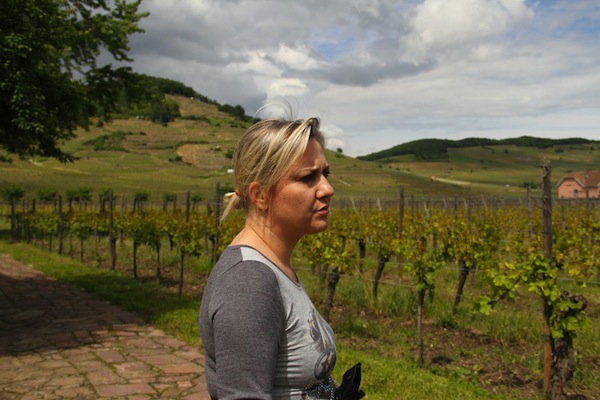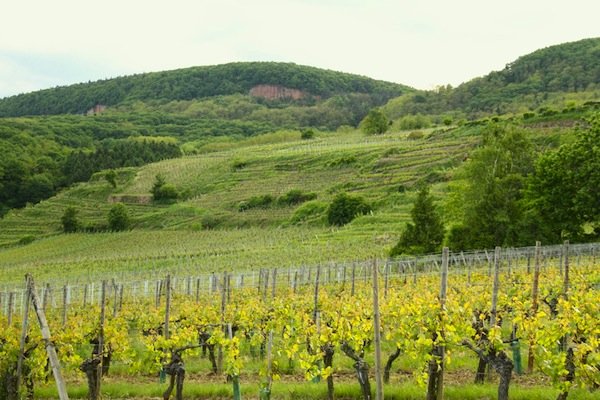There’s been a bit of a furore about wild yeast fermentation over the past month.
The fires were stoked by new research published by scientists at the University of British Columbia and authored by graduate student Jessica M. Lange, summarized in Wine Business Monthly: “Regardless of which yeast started the fermentation—indigenous or otherwise—a dominant commercial strain took over during the process, essentially wiping out any other forms of yeast that might have been present.”
Shock blogger Tom Wark gleefully titled his commentary “Wild Yeast Fermentation – ‘There’s No Such Thing.’” Alice Feiring, first lady of the natural wine community, offered a more considered response, pointing out what she claimed to be some rather obvious flaws in the study. Anyone who has read Jamie Goode’s excellent Authentic Wine which deals with this subject extensively, might have wondered what all the fuss was about.
What is it about this subject that makes it so divisive – and why is it important to winemakers?
First some theory – we all know that grapes need yeast to ferment and metamorphose into wine. Until the 1980s, it was still common to allow fermentations to start spontaneously, with yeasts that were naturally swilling around in the atmosphere or on the bloom of the grapes. But then came new world winemakers, who advanced the science of yeasts by isolating the most efficient strains and reproducing them in laboratory conditions – thus creating the cultured (or “selected”) yeast industry.
It’s now common in both old and new world wineries to blast grapes with a dose of sulfur dioxide as they enter the winery, removing some of the the “local” or wild yeasts and bacteria, and then to inoculate with the winemaker’s chosen cultured yeast. The results are more predictable, fermentation can typically be completed more quickly and the risk of volatile acidity or spoilage yeasts like Brettanomyces joining the party is lessened.
A wine style that we now take for granted – simple, young, fresh, fruity white wines – might well not have become so ubiquitous, or easily available had it not been for the cultured yeast revolution. This was a tool that winemakers could use (together with good hygiene) to make consistent, squeaky clean wines that were not spoiled by rogue cultures, volatility or oxidation.
Countering this trend, more radical winemakers increasingly stress that wild yeasts are a vital part of terroir expression and integrity. Biodynamic guru Nicolas Joly has said “natural yeast is marked by all the subtleties of the year. If you have been dumb enough to kill your yeast, you have lost something from that year”. Some winemakers go further, suggesting that inoculating with a selected yeast is like asking another man to sleep with your wife, to father your child.
Alsace
Let’s step away from all the bluster on the blogosphere, or the rhetoric of high profile wild yeast exponents, to the quieter climes of Alsace, in Northern France.
Alsace is unique as a high quality French wine region in its focus on varietal wines. It’s the only AOP region in France where the grape variety is permitted to be displayed on the label – with noble varieties riesling, pinot blanc, pinot gris and gewürztraminer leading the charge. Over 90% of production is white wine, and there are a bewildering variety of soils and terroirs spread over 15,000 hectares and 51 designated grand cru vineyards.
You might think that a region focusing on fruit purity and elegance would welcome the predictability and control of cultured yeasts with open arms. But that’s the interesting part. They don’t.
Organic and biodynamic viticulture are extremely popular here, with many high profile producers (Albert Mann, Josmeyer and Zind Humbrecht to name a few) having converted and certified over the last few decades. And whilst there may be no regulations that stipulate it, most biodynamic producers would not be caught dead using cultured yeasts in their wineries.
Spontaneous fermentation – to use what might be a less contentious term – is popular in Alsace. Winemakers here rarely add cultured yeasts as a matter of course – although some will intervene if fermentation is not progressing well, or if the wild fermentation would result in an off-dry wine – something that can easily happen in hotter years, with very ripe sugar-rich grapes.
I talked to a range of producers and sampled their wines during a visit to the region in May 2013, to get more understanding of the importance of yeast selection.
Barmès-Buecher
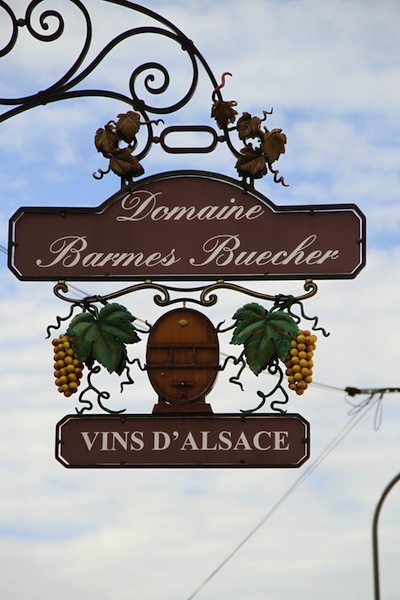 I first met Genevieve Barmès-Buecher at London’s Rawfair in 2012. I was stunned by the complexity and purity of her estate’s rieslings and gewürztraminers – even more so when I realised they were all produced from spontaneous fermentations. Any misplaced ideas I’d had that this technique could only produce rather rustic or even clumsy wines were quickly blown away.
I first met Genevieve Barmès-Buecher at London’s Rawfair in 2012. I was stunned by the complexity and purity of her estate’s rieslings and gewürztraminers – even more so when I realised they were all produced from spontaneous fermentations. Any misplaced ideas I’d had that this technique could only produce rather rustic or even clumsy wines were quickly blown away.
Genevieve’s husband Francois died unexpectedly during the harvest in 2011, having been one of the biodynamic pioneers in the area. Genevieve told me “I rang Max (my son) and said, you have to come and help me finish the vintage. He was amazing – he’d watched his father work for many years, but now he had to do it for himself. Somehow we got through it and everything worked”.
 The Barmès-Buecher way is to accept that each vintage is different, and to let the wine take its own path – and because no cultured yeasts or enzymes are ever added to the ferments, that can mean wildly different residual sugar and perceived sweetness from year to year. For example the Riesling Grand Cru Steingrübler ranges from 21 g/L (2.1%) RS in 2007, to almost none in 2009. Both wines are successful in their own right, though the 2010 tops them both in potential and balance.
The Barmès-Buecher way is to accept that each vintage is different, and to let the wine take its own path – and because no cultured yeasts or enzymes are ever added to the ferments, that can mean wildly different residual sugar and perceived sweetness from year to year. For example the Riesling Grand Cru Steingrübler ranges from 21 g/L (2.1%) RS in 2007, to almost none in 2009. Both wines are successful in their own right, though the 2010 tops them both in potential and balance.
You could argue that such huge differences in style from vintage to vintage, from dry and austere to rich and honeyed are problematic for the consumer. But these are wines that will always be hand-sold to connoisseurs, who one hopes appreciate the variety – and the intense relationship of the finished wine to its vintage conditions.
Domaine Weinbach
Laurence Faller, now the head winemaker at Domaine Weinbach, is of a similar mind to the Barmès-Buecher family. Her watchwords for the wines are finesse and elegance, but she’s happy to let vintages dictate the style.
Domaine Weinbach has been biodynamic since 1998, having previously already been farmed organically. Laurence told me advisedly “I never make it a religion – it’s more of an attitude or a belief”. Needless to say, cultured yeasts are never used chez Weinbach. Botrytis (“noble rot”) is welcomed in small quantities, even in the dry wines.
When tasting the estate’s impressive range of Rieslings, I was struck by the fascinating range of aromas and flavors, from lime leaves, apricots and petrol in the Grand Cru Riesling Schlossberg, to the more mysterious smoky, slatey Cuvèe Theo. Again, there is significant vintage variation in terms of sweetness and richness, although each Grand Cru has its own detectable style.
Zind Humbrecht
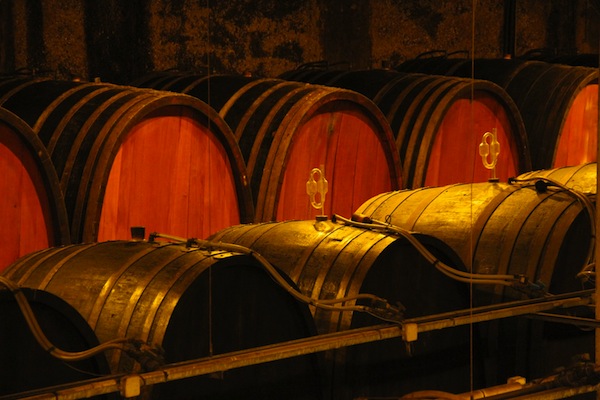 No-one I visited takes the “laissez-faire” aspect of wild yeast fermentations further than Olivier Humbrecht. Another staunch convert to biodynamics, Humbrecht has some 100 different parcels of vines spread about Alsace, including the prized Rangen de Than Grand Cru – a vertiginous plot with volcanic soil which produces extremely fine Riesling and Pinot Gris.
No-one I visited takes the “laissez-faire” aspect of wild yeast fermentations further than Olivier Humbrecht. Another staunch convert to biodynamics, Humbrecht has some 100 different parcels of vines spread about Alsace, including the prized Rangen de Than Grand Cru – a vertiginous plot with volcanic soil which produces extremely fine Riesling and Pinot Gris.
It’s quite normal for the Zind Humbrecht wines to take 9 months to ferment (rather than the few weeks that is more standard for cultured yeast ferments). One barrel of a 2010 Selection de Grains Noble (an intensely sweet botrytis-influenced wine) is still slowly fermenting, having stopped and started several times through the winters.
There’s nothing random or ill-considered about the finished wines, which are supreme in their finesse and assuredness. Olivier also allows malolactic fermentation to take place naturally, leading to some toasty complexity on some of the noses.
Maison Trimbach
Here is an estate which needs no introduction – The Trimbachs produce what are often acclaimed as the world’s finest Rieslings: Cuvèe Frederic Emile and Clos Sainte Hune. They also happen to be one of the largest properties in Alsace, producing around a million bottles a year.
Jean Trimbach told me disarmingly “we just produce the wines we love to drink”. The Trimbach methodology is almost a polar opposite to Genevieve Barmès-Buecher ‘s way. The house style, sometimes jokingly referred to as “Protestant” due to its perceived austerity, is for bone dry Rieslings with mineral expression and powerful acidity. This is achieved year in, year out, sometimes by picking earlier (to avoid undue ripeness and sugar) – and by intervening with cultured yeasts, if it looks like the wines won’t ferment to dryness.
Trimbach did mention, however, that in 2010, wild yeasts were sufficient for the entire fermentation. And on tasting the 2010 Rieslings, the word “elegance” kept on appearing in my notes – none more so than the youthful, incredibly taut and energetic Clos Sainte Hune.
Domaine Paul Blanck
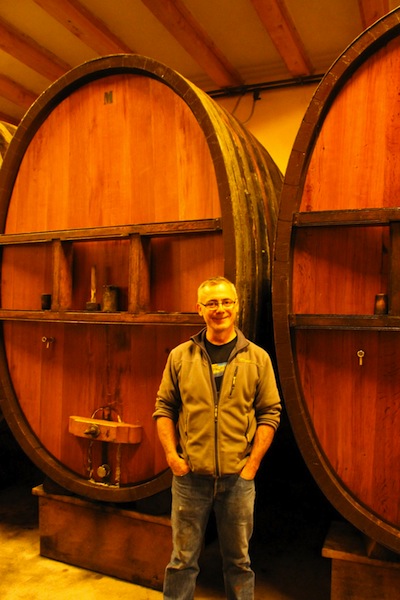 Domaine Blanck are producing some of the best value wines I’ve tasted in Alsace. Grand Crus Furstentum and Schlossberg are especially fine, and the Furstentum Riesling SGN 2007 was the finest sweet wine I’ve tasted in years, quietly trouncing anything else encountered on this trip.
Domaine Blanck are producing some of the best value wines I’ve tasted in Alsace. Grand Crus Furstentum and Schlossberg are especially fine, and the Furstentum Riesling SGN 2007 was the finest sweet wine I’ve tasted in years, quietly trouncing anything else encountered on this trip.
Winemaker Frederic Blanck is down to earth and pragmatic to a fault. He told me “I want to produce the best wine I can – and I don’t need biodynamic certification to do that. I just need a marketing budget to help me sell it!”. He is however passionate about the family’s terroir, mentioning that “Grand cru vineyards are special places to visit”.
Frederic may not be a devotee of biodynamics, but he prefers spontaneous fermentations and rarely intervenes. When I asked him why, the answer came quick as a flash: “Because it’s cheaper!”.
Consistency or vintage expression?
It’s clear that there are two distinct approaches in Alsace – the more interventionist stance as practised by the Trimbachs, to ensure wines that are consistent both stylistically and in terms of their sweetness level, or the laissez-faire ideal of the biodynamic estates, for whom vintage variation is as much a part of the style as anything else.
Even for the interventionists, adding cultured yeasts is seen as a corrective – not a baseline. And if the expressiveness and individuality of the wines I tasted is anything to go by, wild yeasts are playing an important part in expressing the varied terroirs between the Vosges mountains.
I’d wager that most Alsace winemakers would just laugh at the assertion that wild yeast fermentation does not exist.
Edit: A previous version of this article misspelled the name of Laurence Faller. Palate Press regrets the error. The title of Tom Wark’s article has also been corrected.

